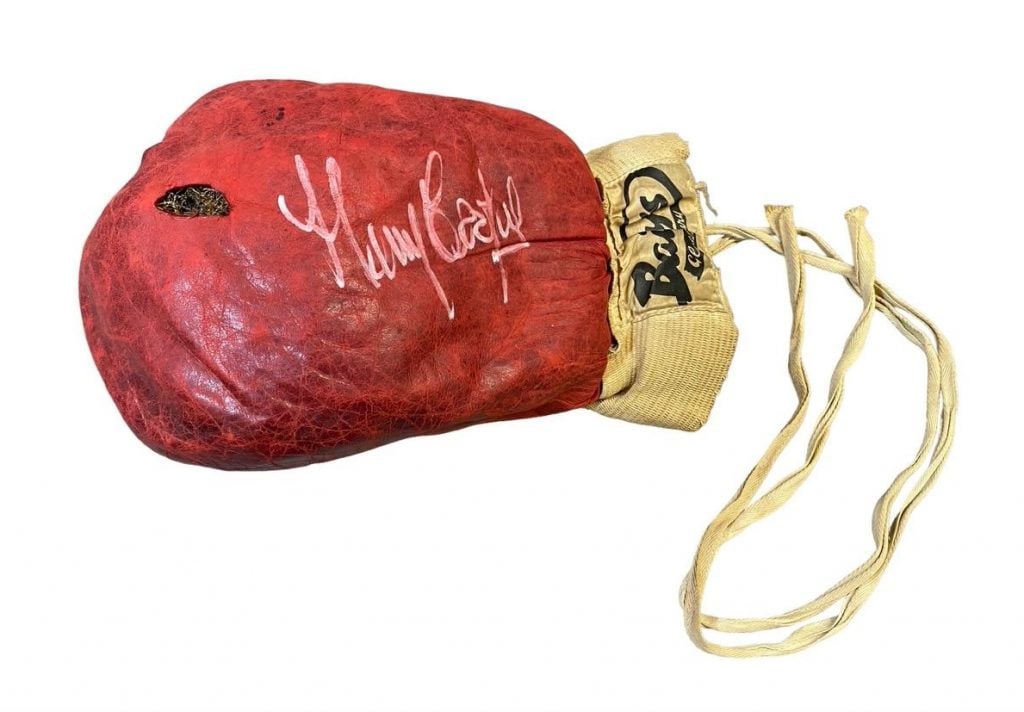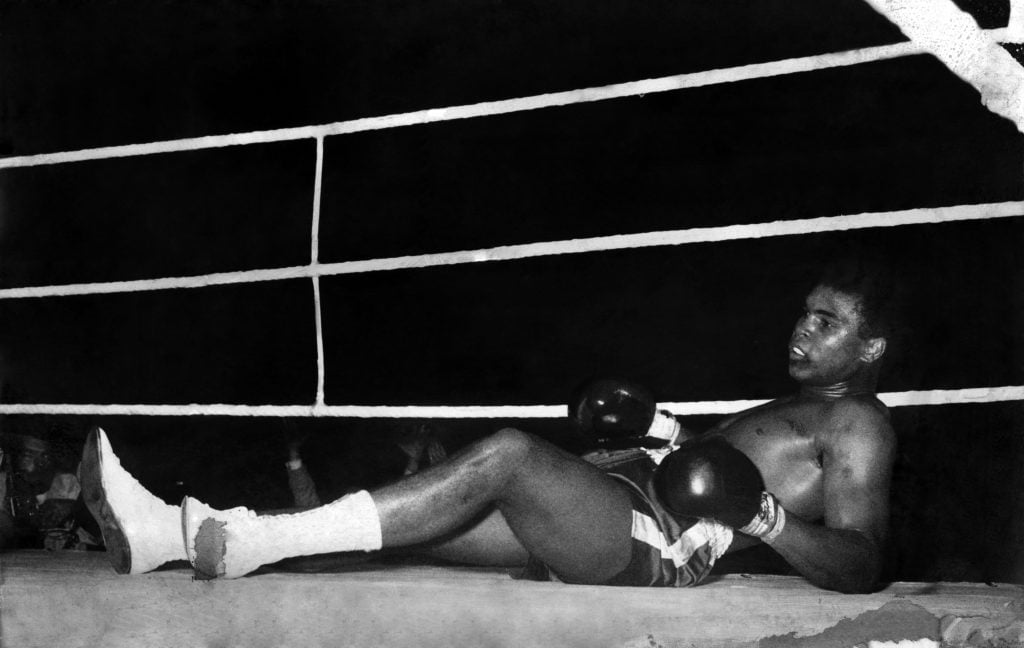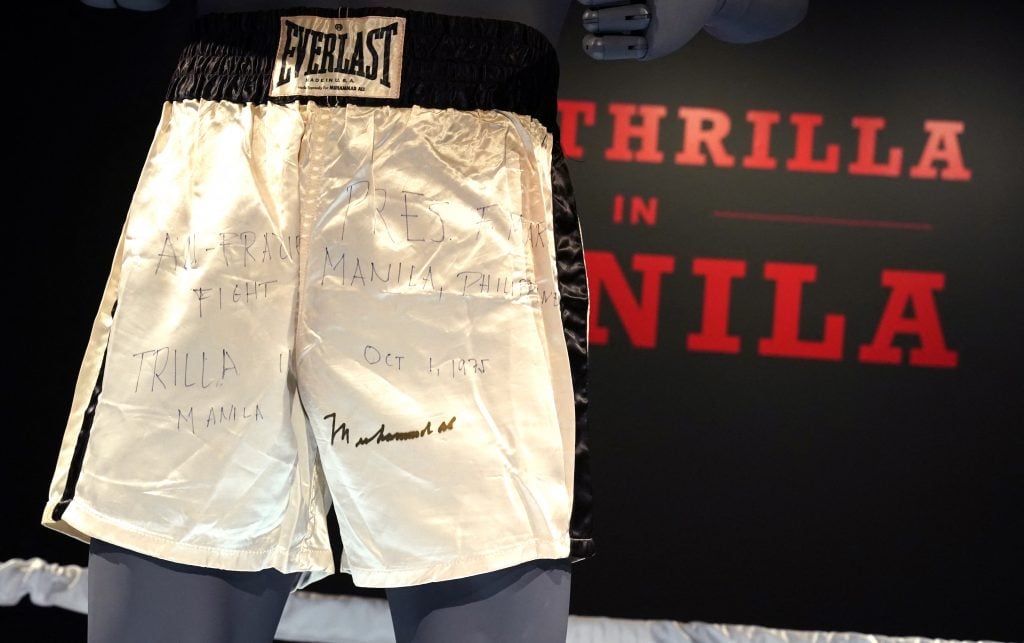Auctions
Pow! The Infamous Split Boxing Glove From Muhammad Ali’s 1963 Fight Hits the Auction Block
Ali was against the ropes while he wore the glove in a fight against Henry Cooper.

An auctioneer from Somerset is selling what he claims is one of history’s most famous pieces of sporting memorabilia: the infamous split boxing glove from Muhammad Ali’s 1963 fight with Henry Cooper.
The leather glove gained legendary status after Cooper floored Ali, then known as Cassius Clay, with a powerful left hook. The bout is the first of only four fights where Ali was officially knocked down in the boxing ring by his opponent. The knockdown came as a surprise, considering that Ali publicly besmirched Cooper before the fight. After Ali hit the canvas floor of the ring, his trainer, Angelo Dundee, is said to have deepened a rip in the glove to buy his boxer extra recovery time while a replacement glove was located. Cooper’s left hook was named “Enry’s Ammer” in honor of his fourth round pummeling of Ali.

Muhammad Ali, then Cassius Clay, on the canvas after taking a left hook from British challenger Henry Cooper. 18th June 1963. (Photo by Mirrorpix via Getty Images)
Stuart Bull of Stuart Bull Auctions set an estimate of £300,000 to £500,000 ($401,190 to $668,650) for the online lot, which will conclude on the 31st of October. He hopes that it could actually fetch between £4 million and £6 million ($5,349,200 and $8,023,800), given its provenance and his belief that the market for sports memorabilia is skyrocketing, especially following Ali’s death.
A similar pair of gloves, allegedly from the same fight, was previously sold by Christie’s in 2001 for £37,600 ($50,282). Bull, however, believes his auction house has the genuine left glove. To prove it, he boasts a 65 page dossier of documents compiled over 3,000 hours worth of research.
The glove, signed by Henry Cooper, was made by leather tannery Baily’s of Glastonbury on commission by the British Boxing Board of Control. After the fight, the glove was reportedly returned to Baily’s for inspection where it remained in storage. It is believed that the right glove currently belongs to the Qatari royal family.

The shorts worn by Muhammad Ali in his legendary “Thrilla in Manila” boxing match fetched bids up to $3.8 million before the sale was suspended. Photo by TIMOTHY A. CLARY/AFP via Getty Images.
Earlier this year, Sotheby’s prepared to stage an auction of Ali’s white satin boxing trunks from his “Thrilla in Manila” fight, when he was recognized as the undisputed heavyweight champion of the world. The pair of Everlast shorts were estimated to sell at $4–$6 million, though the sale was suspended before the bidding was completed.
It’s true that there is no shortage of interest in sports memorabilia, especially when it has a good backstory. In August this year, a sports jersey worn by Babe Ruth during his infamous ‘called shot’ of the 1932 World Series dubbed by one auction house specialist as his equivalent of ‘the Mona Lisa,’ sold for a whopping $24.12 million with Heritage Auctions, making it the most valuable sports collectible in the world. Back in 2022, the game-winning jersey Michael Jordan wore in Game 1 of the NBA Finals sold for $10.1 million, and in December, a sale dubbed “The GOAT Collection: Watches and Treasures From Tom Brady,” will go live at Sotheby’s.





